In Part 1 of our finding technical talent series, we introduced you to the concepts of hiring roadmaps and intake meetings — fundamental recruiting practices to help your business find the best technical talent. Or, at least, attract the best technical talent to your business.
So, before we dive into Part 2, let’s pick up where we left off.
Once you and your stakeholders have created your hiring roadmap, had your intake meeting, and crafted the perfect job description, it’s time to make your posting public. Chances are, if you’ve done your research and posted to appropriate job boards and forums, you’ll see a healthy amount of traffic to your job description — resulting in a healthy amount of applicants.
But, what happens if you see a less than desirable number of applicants for the role? Or, the right people aren’t applying for your position?
Truthfully speaking, it doesn’t matter how great your job description is — you won’t always find the perfect candidate by relying on your applicant pool.
Truthfully speaking, it doesn’t matter how great your job description is — you won’t always find the perfect candidate by relying on your applicant pool.
Depending on the role you’re hiring for, you might have to do more than post and pray. In Part 2 of our finding technical talent series, we’re going to cover how to source candidates and how to conduct persuasive reach outs.
You might also like: How to Hire Employees: The Essential List of Resources for Agency Owners.
Sourcing candidates 🔎

Have you ever been messaged by someone on LinkedIn about a new job opportunity?
Chances are they’ve sourced you out, and are actively trying to gauge your interest in the position by reaching out to you directly.
If you’ve never heard of sourcing, it’s the practice of reaching outside of your applicant database to specific people who you believe would be a great fit for the position in question — because as we stated earlier, you won’t always find the perfect candidate by relying on your applicant pool alone.
There are many cases where the best candidate for the position likely won’t apply through your job posting, and you’ll have to use sourcing to get them into your recruitment funnel:
-
You’re looking for someone to fill a senior position. If you’re looking for a creative director, you’re likely going to want to hire someone who has continuous creative director experience. However, people in more senior positions at other companies are likely feeling comfortable, or at least content where they are — meaning they’re not necessarily looking for a new job opportunity.
-
You’re looking for someone to fill a niche position. If you’re looking to expand your service offering by adding a local illustrator to your team, your job posting may not receive as many applicants as you’d like. This means you’ll have to do your own research to ensure a healthy hiring process.
- You’re looking for someone with an unusual combination of skills. If you’re a smaller agency, or a freelancer, you may be looking for someone who can wear many hats — for example, someone who knows both Ruby to work on client projects, and inbound marketing tactics to help with client acquisition. A person with both of these skills is probably rare — borderline unicorn status — so you may need to look past your applicant pool to find what you’re really looking for.
But there’s an even simpler reason you might turn to sourcing to find the best technical talent for your business: your current applicant pool is weak.If your job posting isn’t producing the types of candidates you believe would be the best fit for your business, you may opt to source a more qualified list to reach out to.
But there’s an even simpler reason you might turn to sourcing to find the best technical talent for your business: your current applicant pool is weak.
When done right, sourcing candidates will help you:
- Produce a more qualified pool of candidates.
- Identify better value/skill alignment in potential candidates.
- Foster a more diverse pool of candidates.
Though you may not always need to source additional candidates for your hiring process, it’s good to understand when you should be sourcing new candidates, and how the sourcing process works, to ensure you’re hiring the best technical talent for your business.
The sourcing process ⚙️
Broken down to its simplest form, there are two steps to the sourcing process:
-
Finding candidates. You can do this using a variety of different social media channels, your personal referral network, or a paid research solution — basically anything outside of your existing pool of applicants.
- Reaching out to candidates. Sourced candidates won’t know that you’re considering them for a job opportunity unless you reach out to them. Get in touch with the candidates to discuss your job opportunity — if they’re a good fit, encourage them to interview with your team.
During your intake meeting, you and your stakeholders should have decided on a process to determine who will be doing the sourcing and reach outs for your hiring process.
If that person is you — don’t worry, we’ve got you covered.
Though sourcing is traditionally a very manual process, there are a variety of tools you can use to make it easier — allowing you to spend more time researching new candidates, and less time trying to find them.
You might also like: Tips and Tricks for Managing Remote Employees.
6 tools for sourcing candidates 🛠
In order to be truly successful in your hiring and recruiting process, we recommend curating a toolkit of go-to resources that you can use to find and track potential candidates.
Use one, or many, of the sourcing tools mentioned below to ensure you’re finding qualified technical talent for your business:
1. LinkedIn
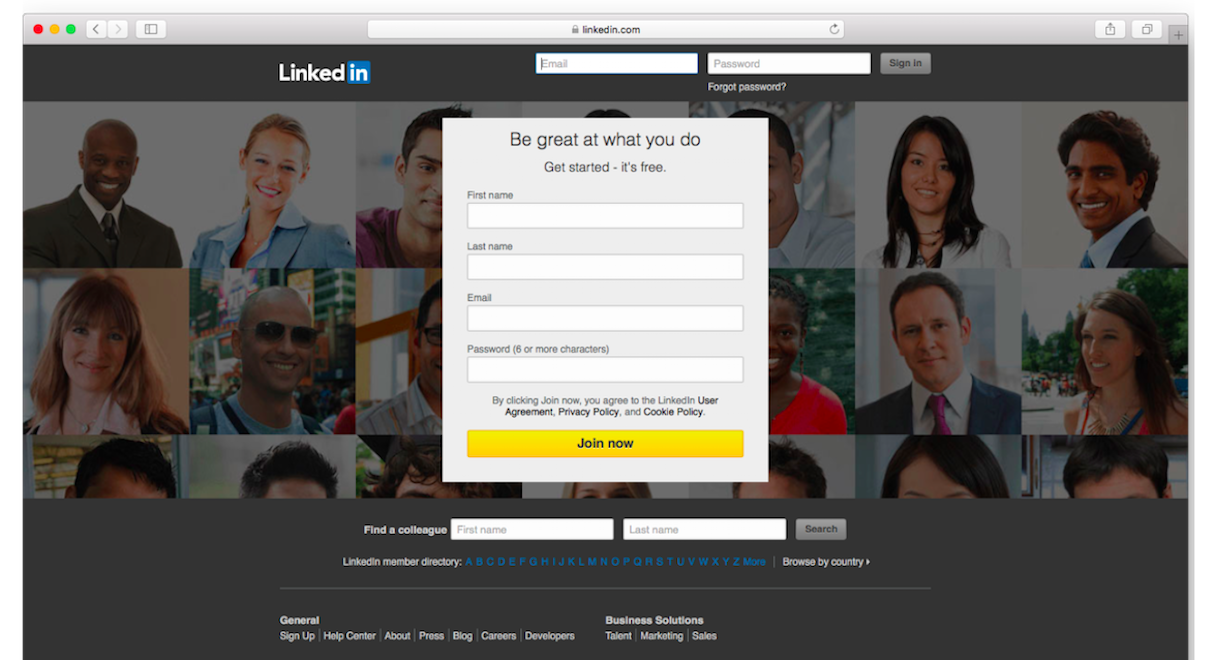
Given its nature, LinkedIn is a powerful recruiting tool for freelancers and agencies alike. LinkedIn’s search functionality allows you to use keywords — including boolean logic — to hone in on prospects quickly and efficiently. You can search by title, city, education, and more — the sky's the limit in terms of how broad or precise you want to make your search query.
As a free user, you can browse a limited number of search results, and have next-to-no Inmail functionality for anyone outside of your first degree connections list. However, if you really want to reach out to someone you’ve found using this method, you can see a list of profile/contact information in the top-right dropdown of their profile.
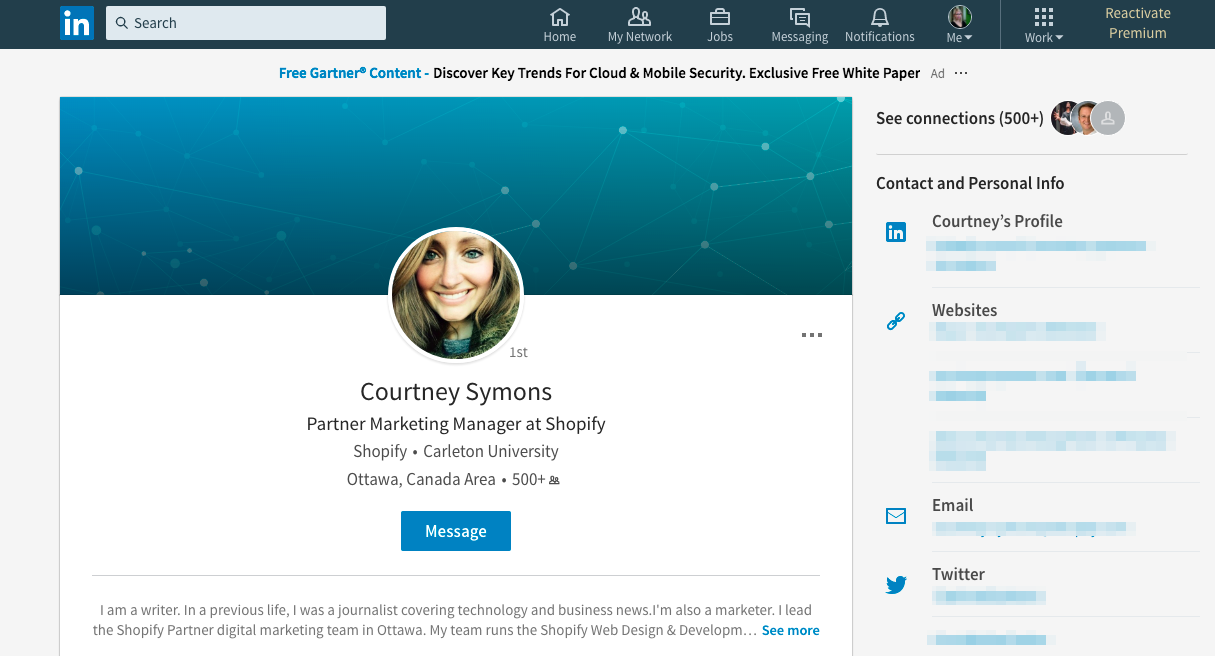
Or, if you choose to, you can upgrade to LinkedIn’s hiring plan, which gives you access to advanced searching capabilities, smart talent suggestions, automatic candidate tracking, and more. Just know that these features come with a $99.00/month subscription price tag.
You may want to consider investing in a premium subscription, though. As far as sourcing candidates goes, even if you use the other tools mentioned below, you’ll always refer back to LinkedIn for additional information about a candidate — after all, it’s the largest network of business professionals around, and you’re most likely to find their contact information here for conducting reach outs.
2. Twitter
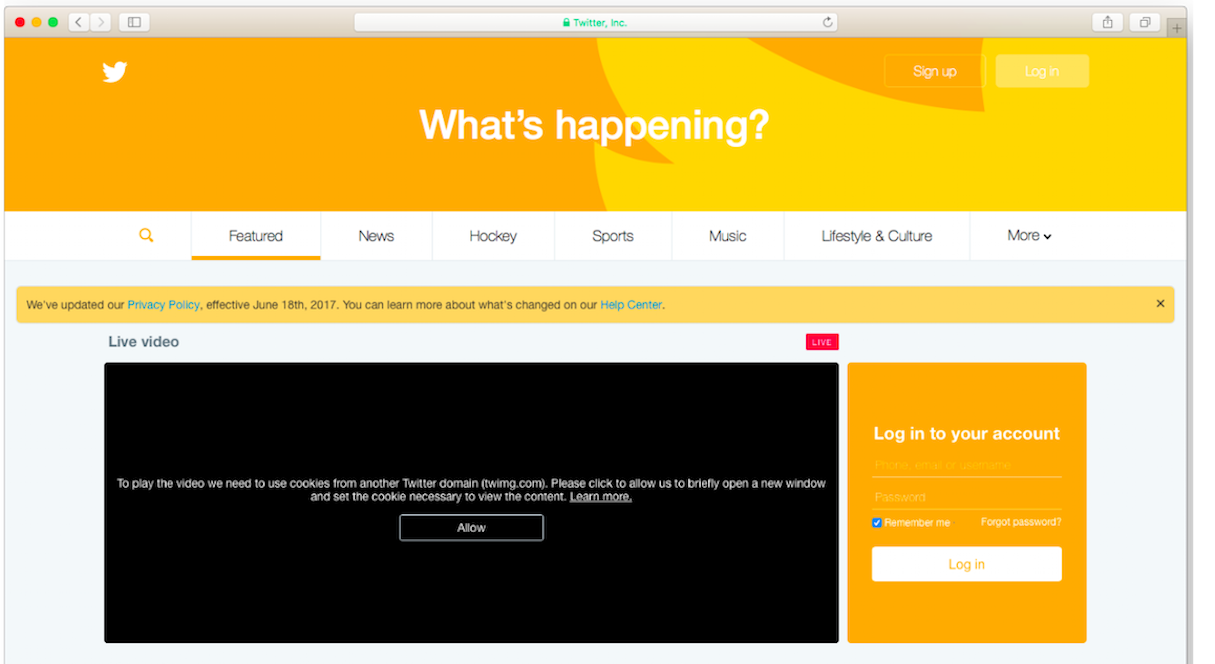
Unlike LinkedIn, where you’ll be directly sourcing candidates based on their skills and experience, you’ll use Twitter to see what people are talking about with regards to news, trends, and tools in your industry. These conversation streams can help you identify new influencers in the space, popular media articles, and more — ultimately giving you the intel you need to source great technical talent for your business.
Browse, read, and investigate — that influencer you found could be a potential candidate for the job position you’re hiring for, and the writer of that article could be one, too. Twitter is full of information that can lead you to other talented individuals, so always keep your eyes open!
Twitter is free to sign-up for, and you (or your business) probably already have a presence on the popular social network. So, why not leverage it for recruiting?
3. Facebook
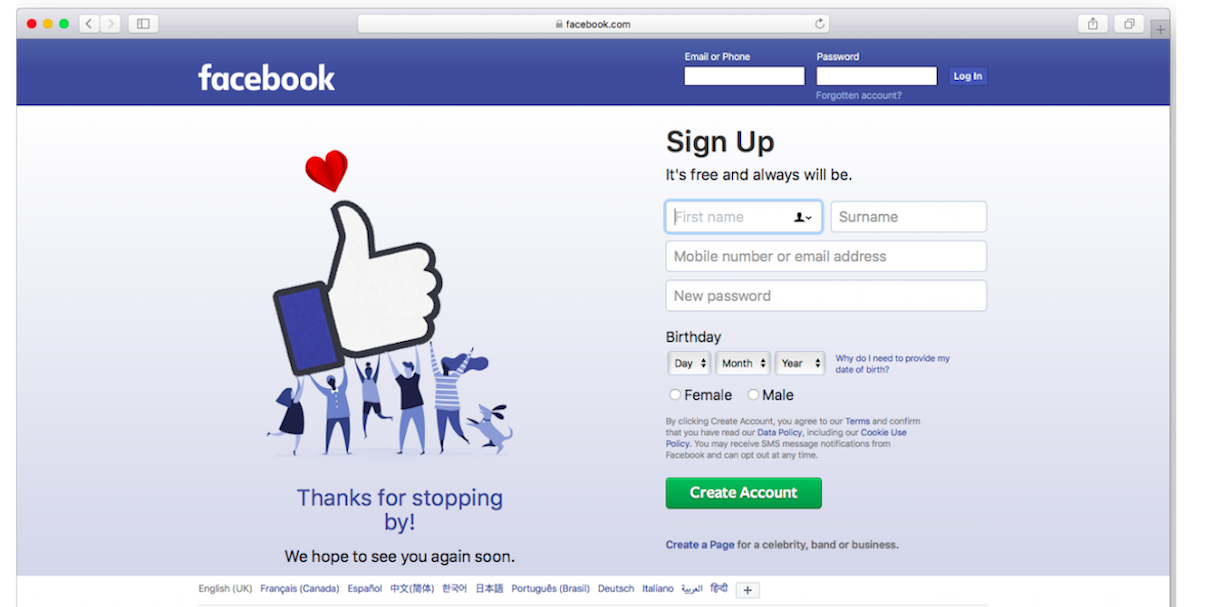
No, we’re not encouraging you to Facebook stalk your applicants (or their friends) to try and source new candidates. And though you can use Facebook to gather precious research similarly to how you’d use Twitter, Facebook has a distinguishing feature that you’ll want to leverage when you’re sourcing new candidates: Facebook Events.
Look through the many events posted to Facebook, and comb through the attendee and invited lists. Lots of community organizations, local businesses, and other initiatives will create a Facebook Event to gain more visibility amongst their target audience — and you can only imagine if one ideal candidate is attending an event, then like-minded people will be invited, as well.
And like Twitter, your business probably already has a Facebook presence — use it to find the best technical talent for your team.
4. Meetup

Similarly to how we suggest you use Facebook to identify high-potential attendees, you can use Meetup to source new candidates for your hiring process. It’s a social network built to facilitate social gatherings and meetings — and allows you to easily browse events based on industry.
For example, as someone who is looking to hire for a more technical role, you would browse meetups under the “tech” category. Here, you’ll find a variety of different technology events in your area, be able to scope how large these events are, and research who is attending them.

Additionally, you can click into member profiles to find out more about them — helping you source high-potential candidates for your open job position.
5. Lanyrd
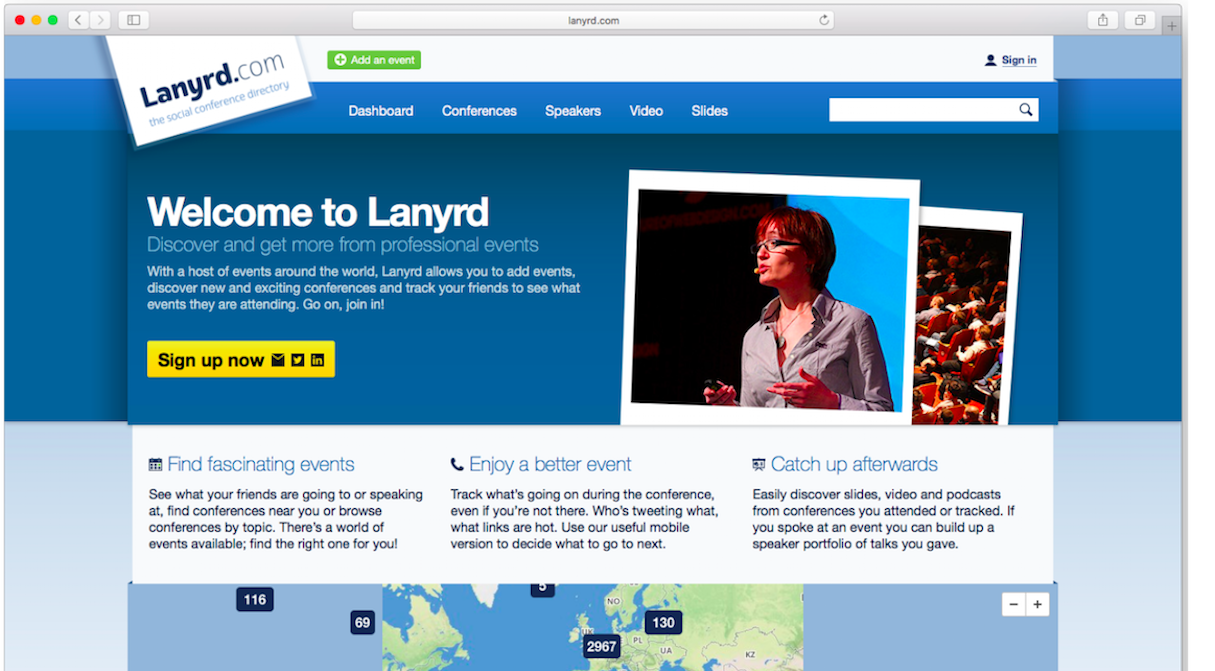
Maybe you’re looking to source someone who is an established thought-leader in your space. Someone who, if hired, would add some clout to your business — and continue that path of thought leadership throughout their career.
One of the easiest ways to source these types of candidates is to use Lanyrd — a social network that curates professional events and conferences from around the world, and includes information on guest speakers, their presentation topics, and how many events they’ve spoken at in the past.
You can use this precious intel to gauge how much influence a prospect has within their industry, and how much of an impact they can have on your business.
6. Entelo
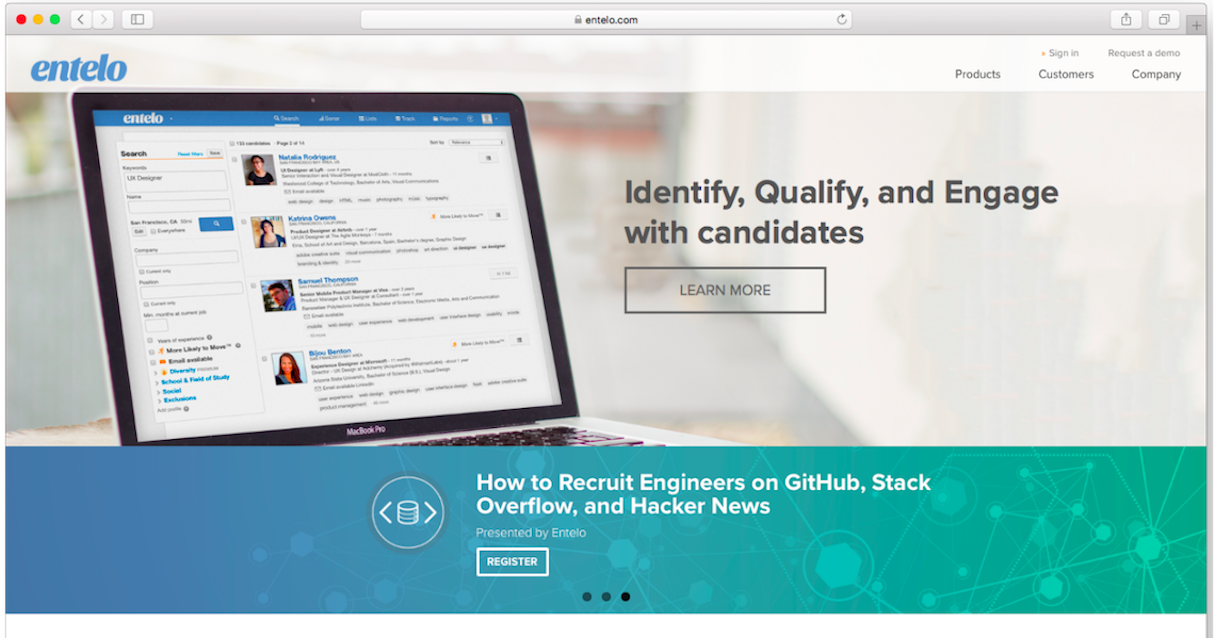 If you’re looking for a tool outside of LinkedIn to conduct outbound recruiting efforts, you should consider using a platform like Entelo.
If you’re looking for a tool outside of LinkedIn to conduct outbound recruiting efforts, you should consider using a platform like Entelo.
According to their website, you can source candidates from over 300,000 candidates using aggregated social data from 50 different sources. They even have a patented “Likely to move” indicator — allowing you to identify candidates most likely to respond to new job opportunities.
Entelo is considered enterprise-level software, and thus comes with an enterprise-level price tag. Though they don’t offer pricing information on their website, you can always request a demo.
Reaching out to sourced candidates 📨

Once you’ve sourced some high-potential candidates for the position you’re hiring for, it’s time to conduct reach outs — that is, let these people know that you’ve considered them candidates, and gauge their interest in a job with your business.
You can conduct a reach out using a variety of mediums like LinkedIn InMail, Twitter direct messages, and email. Regardless of how you decide to contact a candidate, a persuasive, well-written reach out consists of three parts:
- A short message explaining why you’re reaching out to the candidate.
- A description of the opportunity.
- A call to action.
We’ll go into further detail to ensure that your reach outs are as productive as possible.
You might also like: 9 Tips for Hiring a Web Design Subcontractor.
1. A short message explaining why you’re reaching out
Thinking back to our LinkedIn example at the beginning of the article, how many times have you received a message from a recruiter that you could immediately tell was copied-and-pasted, and your name was the only thing that changed?
This type of interaction is bad for two reasons:
- It doesn’t feel too good to receive something that isn’t personalized.
- It definitely doesn’t make you want to find out more about the opportunity.
You want your first outreach to a sourced candidate to make a good impression — it’s likely the candidate’s first ever interaction with your brand. You don’t want to leave them thinking, “if this business can’t be bothered to connect with me on a personal level through an email/message, what’s the rest of their business like?”
Look back to your research: have you identified any projects the candidate is currently working on? Have they written a medium article? Have they tweeted an interesting opinion about an industry trend?
Use this intel to open your reachout with a compelling and personalized reason as to why you’re reaching out.
For example:
Hey (insert name of candidate),
I was just reading your Medium article on (insert topic), and really love the way you (solve a technical pain point /explained how to do something/etc.). I thought I would reach out and see if you were interested in a new job opportunity with (insert name of your business) — (insert the why a candidate is a good fit, or insert a way that you’re aligned, i.e. working to solve the same problems, etc.).
2. A description of the opportunity
Think of this as the elevator pitch you created during your intake meeting — a short description of what the role is, why the sourced candidate should consider pursuing it.
It’s difficult to give a templated example, because your elevator pitch, and the information you’ll use to persuade a potential candidate, will vary from reachout-to-reachout. However, you can see the elevator pitch integrated into completed example below.
3. A call to action
You should always finish every reach out with a call to action. This can be a phone call to get to know the candidate better, or an invite to chat over coffee, if you’re in the same city.
Remember, you’re still in the exploratory phase and selling mode for the candidate — so avoid calling your follow-up conversation an interview. Who knows, after a phone call, you may not think this person is a right fit for the position. Keep the interview until you’re absolutely sure the candidate is ready and has bought into the entire process.
As a pro tip, consider using a software solution to schedule phone calls, coffee chats, and interviews. Reaching out to manually book meetings with qualified candidates can be more time consuming than the meetings themselves — that’s why you should use a product like Calendly, which allows you to send candidates a calendar listing all of the times you’re available.
An example of a call to action could be as follows:
If you’re interested in learning more, I’d love to get on a quick phone call with you. Let me know which time works best for you, or you can pick any available time on my calendar (insert link to Calendly, or other service).
Putting it all together
When you’re done, you should have a message that looks something like this:
Hey Kate,
I was just reading your Medium article on Measuring Marketing Success on Shopify, and really love the way you use the Marketing Events API to help your clients understand the impact of their promotional efforts on Instagram. I thought I would reach out and see if you were interested in a new job opportunity with InstaShop — we’re always trying to solve these types measurement problems for our merchant clients.
We’re looking for a new developer to join our team. Here, you’ll have the freedom and resources to continue working on projects you’re clearly passionate about — helping clients demonstrate the ROI on their marketing activities. This a full-time position in our New York office.
If you’re interested in learning more about the role, I’d love to get on a quick phone call with you. Let me know which time works best for you, or you can pick any available time on my calendar (insert link to Calendly, or other service).
All the best,
Sara
Taking the next steps in the hiring process 🏁
So far in this series, we’ve covered how to:
- Track your growth and figure out when it’s time to add another team member.
- Run productive intake meetings to build out the context and requirements of your new role.
- Source candidates using a variety of free and paid tools.
- Reach out to candidates in a productive, personalized way.
Once you’ve created a qualified pool of applicants and candidates, it’s time to move on to the interview process. But again, we won’t get ahead of ourselves. 😉
Stay tuned next week for Part 3, where we’ll cover candidate experience, interviews, offers — and a topic that a lot of businesses find stressful— handling rejections.
Read more
- Free Industry Report] The Opportunities, Threats, and Future of the Consumer Electronics Industry
- Teaching Code: A Getting Started Guide
- Free Industry Report] The Future of the Fashion and Apparel Industry
- How to build a Shopify POS Pro demo store
- 5 Ways to Ensure Your Client's Online Business is Tax Compliant
- Go Back to School With These Online Courses for Continuous Learning
What kinds of outreach strategies do you undertake when hiring technical talent? Tell us in the comments section below!

